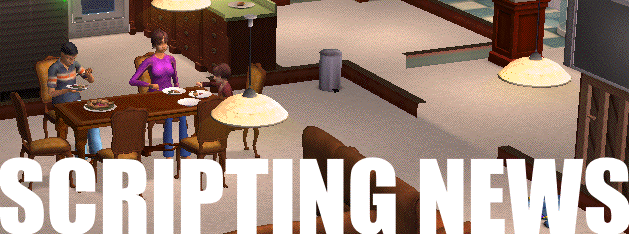
 Need help with CSS-based outlines
Need help with CSS-based outlines 
Update: First, thanks for all the help -- but it's getting too late, and I'm not converging on anything, and this is a production site, and the software now has other users. So I had to punt on making this work for now. I think Jeremy Felt's advice is the best, and I don't think I'm going to get this to work until I put a few days in front of me to do the usual wrestling with CSS stuff.
Back in May and June when I was working on the rendering code in Scripting2, I'd frequently post questions here about CSS and got phenomenal support from members of the community. I've gone quiet lately as I've been working in other areas, but now I'm swinging back to rendering, and could use some help.
I have code that renders two-level outlines, but now I want to generalize it so I can go N-levels and have a nice indented display that you can expand and collapse.
I've implemented the recursion, as you can imagine, it's pretty simple, but now I'm hung up on how to get the indenting to work. Here's an example.
Names
Everything works as it should except the indentation.
What am I doing wrong? (Heh don't you love it when users say that.)
How about this: I want to get it right! ![]() ">
">
When it's working it should look something like this. (Never mind the wedges, look at the indentation.)
Any help would be appreciated.
 The joy of a new computer
The joy of a new computer 
 I bought myself a new top-of-the-line iMac.
I bought myself a new top-of-the-line iMac.
The old one was getting really old. Lots of things were breaking that would cost a lot of money to fix when you add them all up. The computer still works, but the peripherals weren't.
Anyway, I decided I deserved a computer that really worked, so I went for the best iMac they sell, and it came within 24 hours, and I've been using it for 24 hours. All I can say is WOW.
First, the display is beautiful. The colors are true. White really is white. It's white the way the headlights on my BMW are white. Like a crisp new white shirt or a brand-new T-shirt. White-white.
And man this thing is fast.
I don't remember getting this kind of performance boost since the days when the PC was going through its upgrades in the 1980s. Macs never seem to get that kind of a lift, until now.
This thing flies.
Just to prove it, running the Intel version of the OPML Editor, I wrote a script that's just a tight loop, adding N to an accumulator. It ran a million loops in two seconds. That's interpreted code!
Here's a picture of the two computers side-by-side.
Just want to say -- it's a wonderful thing to be able to use a little money to buy some happiness.
 More Scripting2 work today
More Scripting2 work today 
 Just did a major shakeup on the back-end.
Just did a major shakeup on the back-end.
Now when I save a post it's rebuilding the OPML source before it saves it. This puts it through a cleanup step before other apps could depend on it. It also might break any apps that have been written that depend on it being built a certain way.
I suppose this is a bit of a warning. Use a real XML parser to handle my XML, not string processing. I play by XML rules, which means order of attributes isn't important.
I probably should write a simple bookmarklet that depends on OPML "auto-discovery" so I can easily tell when I've broken something.
Anyway, if you want to see where I'm headed with all this, watch the To-Do list on the Changes page. ![]() ">
">



